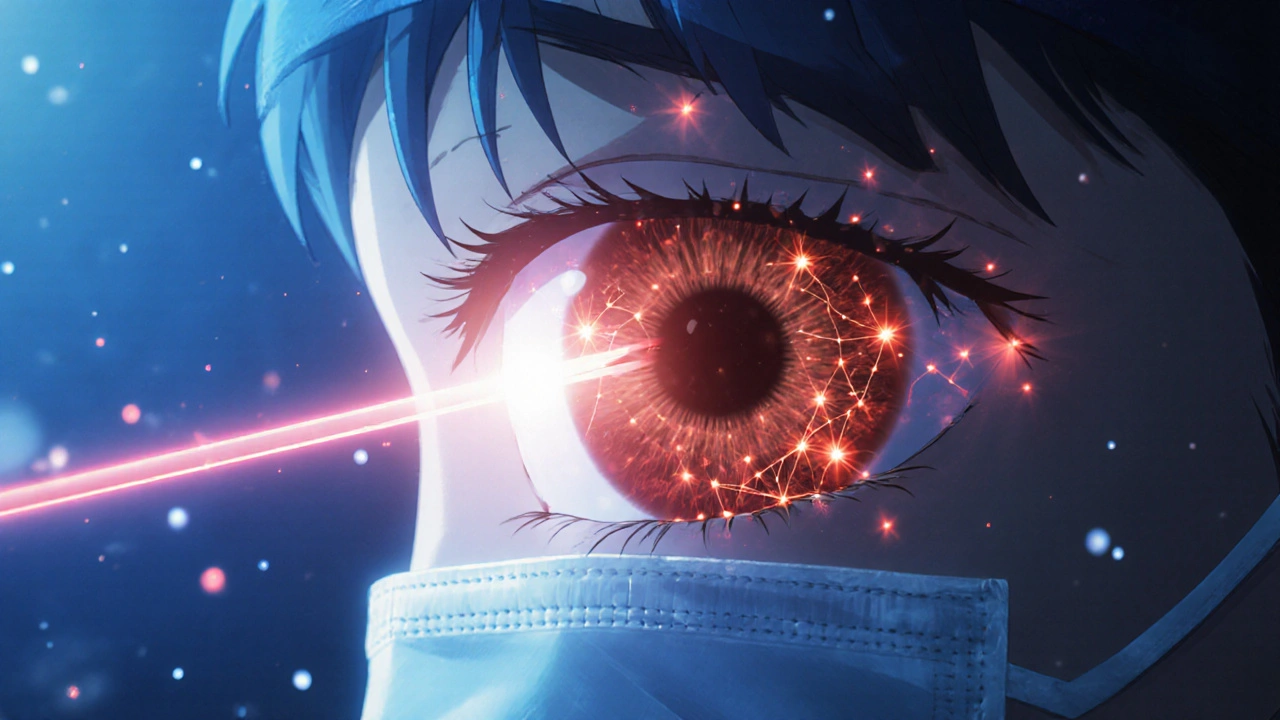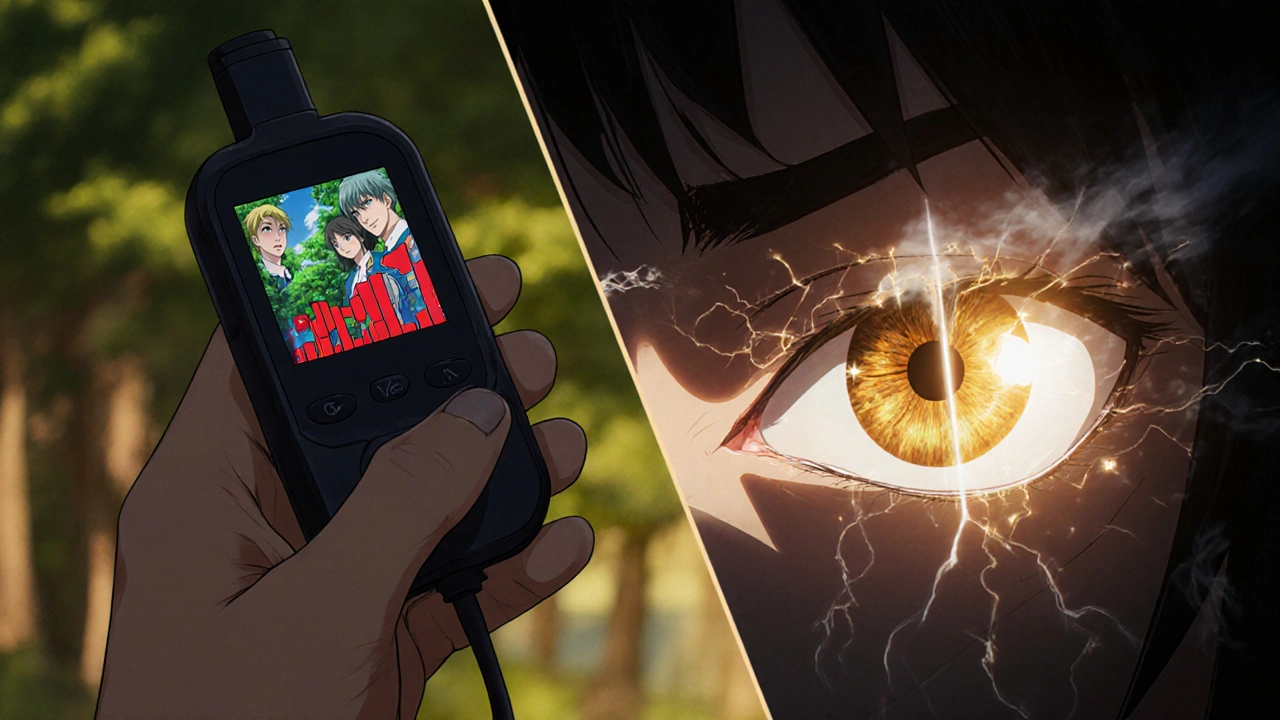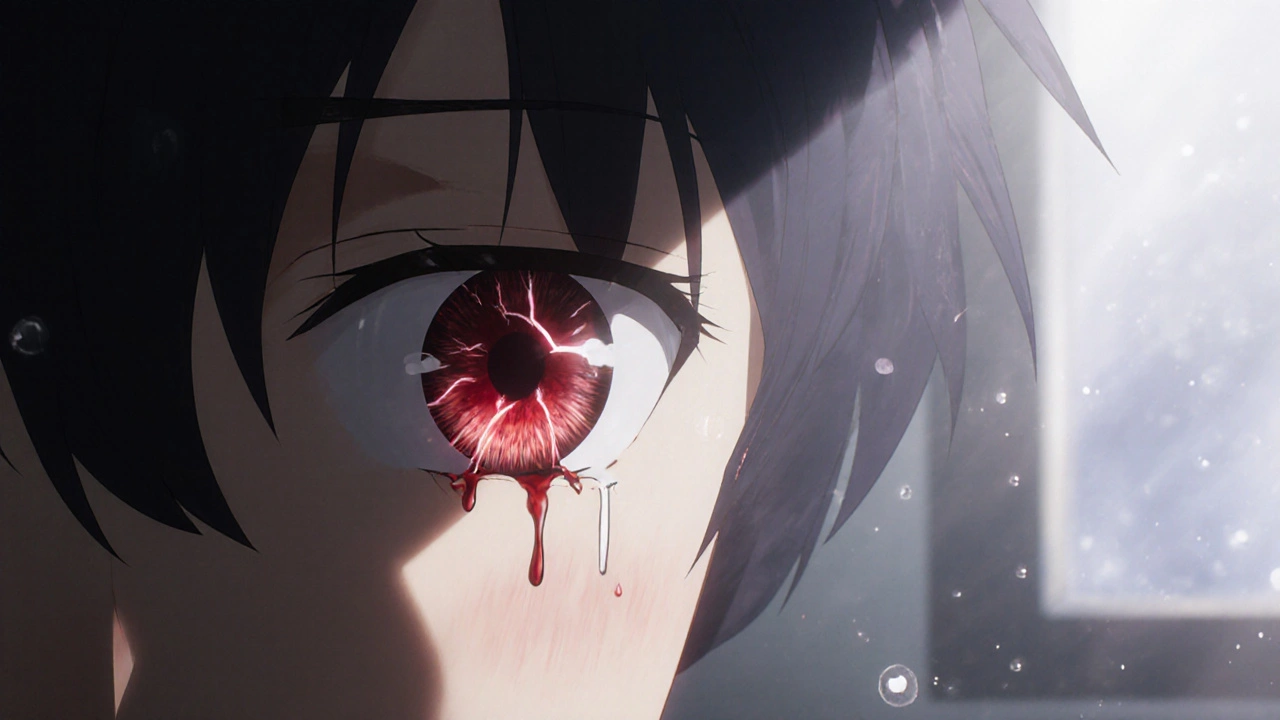Imagine waking up one morning and noticing your vision is blurry-like looking through a fogged-up window. You think it’s just tired eyes. But if you have diabetes, this could be more than fatigue. It could be diabetic retinopathy, a silent thief stealing your sight, one damaged blood vessel at a time.
What Happens When Diabetes Attacks Your Eyes
Diabetic retinopathy isn’t just a side effect of diabetes-it’s a direct result. Every time your blood sugar stays too high, it damages the tiny blood vessels in your retina, the light-sensitive layer at the back of your eye. These vessels are meant to deliver oxygen and nutrients to your vision cells. But high sugar turns them weak, leaky, or completely blocked. At first, you won’t feel a thing. That’s the problem. No pain. No warning. The damage builds slowly over years. By the time you notice floaters, blurred vision, or dark spots, the retina has already been hurt badly. According to the National Eye Institute, about 1 in 3 adults with diabetes will develop some form of retinopathy. And for many, it’s the leading cause of vision loss between ages 21 and 64. The damage happens in stages. In the early stage, called nonproliferative retinopathy, small bulges called microaneurysms form in the vessel walls. These can leak fluid, causing swelling in the macula-the part of the retina responsible for sharp, central vision. That’s called diabetic macular edema (DME). About 6.7% of people with diabetes develop DME. It’s what makes reading, driving, and recognizing faces hard. As it worsens, more vessels get blocked. The retina starts to starve for oxygen. In response, it tries to grow new blood vessels. But these aren’t normal. They’re fragile, messy, and prone to bursting. This is proliferative diabetic retinopathy-the most dangerous stage. These new vessels can bleed into the clear gel inside your eye (vitreous hemorrhage), pull the retina loose (retinal detachment), or block fluid drainage and cause glaucoma. All of this can lead to permanent blindness.Why You Can’t Wait for Symptoms
Most people don’t realize they have diabetic retinopathy until it’s advanced. A study from the University Health’s Texas Diabetes Institute found that 68% of patients only notice symptoms when the damage is already moderate or severe. That’s why regular eye exams aren’t optional-they’re life-changing. The NHS and Cleveland Clinic both stress that annual dilated eye exams are the only reliable way to catch retinopathy early. During the exam, an eye doctor uses drops to widen your pupils and looks directly at the retina with a special lens. They can spot microaneurysms, bleeding, or swelling long before you notice any vision changes. If you’ve had diabetes for more than 5 years, your risk jumps significantly. Pregnancy, high blood pressure, high cholesterol, and smoking all make it worse. Even if your diabetes feels under control, the damage can still creep in. That’s why checking your HbA1c (a measure of average blood sugar over 3 months) isn’t enough-you still need your eyes checked.Laser Treatment: How It Stops the Damage
Laser treatment, or photocoagulation, has been the go-to option for decades-and for good reason. It’s not a cure, but it’s one of the most effective ways to stop vision loss. There are two main types. The first is focal laser treatment, used for diabetic macular edema. The doctor targets specific leaking blood vessels in the macula. The laser seals them off, reducing swelling and helping vision stabilize. Many patients report sharper vision after this procedure, especially when done early. The second is panretinal photocoagulation (PRP), used for proliferative retinopathy. Here, the laser isn’t focused on one spot-it’s applied to large areas of the retina outside the macula. This doesn’t improve vision. In fact, it might slightly reduce side vision or night vision. But it saves your central sight. By creating tiny burns, the laser tells the retina: “You don’t need to grow new, dangerous blood vessels anymore.” The abnormal vessels shrink, bleeding stops, and the risk of retinal detachment drops dramatically. Research shows that people who get timely laser treatment have a 95% chance of preserving their vision. That’s not a guess-it’s based on decades of clinical data from UVA Health and the Cleveland Clinic. The treatment is usually done in one or two sessions, outpatient, with local numbing drops. You might feel a slight pressure or bright flashes, but it’s not painful.
Laser Isn’t the Only Option Anymore
In recent years, laser treatment has been joined by new therapies. Anti-VEGF injections-medications like ranibizumab or aflibercept-are now commonly used, especially for DME. These drugs block the protein (VEGF) that triggers abnormal blood vessel growth. They’re injected directly into the eye, often every few weeks or months, and can improve vision more than laser alone in some cases. Steroid implants are another option. They slowly release medicine into the eye to reduce swelling, but they carry a higher risk of cataracts and glaucoma, so they’re not always first-line. The best approach today? Combination therapy. For DME, doctors often start with anti-VEGF shots. If swelling persists, they add laser. For proliferative retinopathy, PRP laser is still the gold standard, but anti-VEGF can be used alongside it to speed up healing and reduce the number of laser sessions needed. The key is not choosing between laser and injections-it’s using both at the right time. And that decision depends on how far the disease has progressed, your overall health, and how well your blood sugar is managed.Your Role in Stopping the Damage
No laser, no injection, no miracle drug will work if your blood sugar stays out of control. That’s the foundation. The Cleveland Clinic says keeping your HbA1c below 7% slows retinopathy progression by up to 76%. That’s not just a number-it’s your vision. Managing your diabetes means more than taking pills. It’s about consistent meals, regular exercise, monitoring your levels, and avoiding spikes. High blood pressure and cholesterol make retinopathy worse, so those need attention too. Quitting smoking cuts your risk of severe eye damage by nearly half. And don’t skip your eye exams. Even if your vision feels fine. Even if you’re “doing okay” with your diabetes. The damage doesn’t wait for you to feel ready. It works quietly, steadily, and without mercy.
What Happens If You Do Nothing?
Ignoring diabetic retinopathy isn’t just risky-it’s dangerous. Without treatment, bleeding in the eye can become permanent. Scar tissue can pull the retina away from the back of the eye. Fluid buildup can destroy the macula. Once photoreceptor cells die, they don’t come back. Vision loss becomes irreversible. The economic cost of treating diabetic retinopathy in the U.S. is estimated at $500 million annually. But the human cost? That’s harder to measure. It’s the driver who can’t see the stop sign. The grandparent who can’t read their grandchild’s letter. The person who loses independence because they can’t recognize faces. Prevention isn’t expensive. A dilated eye exam costs less than a new pair of glasses. Laser treatment is often covered by insurance. Anti-VEGF injections are expensive, but they’re used only when needed-and they’re far cheaper than lifelong blindness.What You Should Do Right Now
If you have diabetes:- Get a dilated eye exam at least once a year, even if you feel fine.
- Ask your doctor for your latest HbA1c number. Aim for below 7%.
- Control your blood pressure and cholesterol. Ask for a lipid panel if you haven’t had one recently.
- Stop smoking. If you need help, talk to your doctor-there are proven programs.
- Don’t wait for symptoms. By then, it’s too late for full recovery.
- Follow your eye doctor’s treatment plan exactly-whether it’s laser, injections, or both.
- Keep your diabetes management on track. Treatment works best when your blood sugar is stable.
- Track your vision changes. Use a simple chart at home to note if things get blurrier, darker, or wavier.
- Connect with a diabetes educator. They can help you adjust your diet, meds, and habits to protect your eyes.
Final Thought: Your Eyes Are Watching You
Your retina doesn’t lie. It shows you what your blood sugar has been doing for months. It’s a mirror of your health. If your eyes are healthy, your body is mostly under control. If they’re damaged, it’s a signal-loud and clear-that something needs to change. Laser treatment isn’t scary. It’s a shield. It doesn’t fix everything, but it stops the worst from happening. And if you catch it early, you can keep seeing the people you love, the things you care about, the world around you-for years to come.Can diabetic retinopathy be reversed?
Early damage, like mild swelling from diabetic macular edema, can sometimes improve with treatment-especially if caught quickly. But once photoreceptor cells die or scar tissue forms, the damage is permanent. That’s why early detection is critical. Laser and injections can stop further damage and preserve remaining vision, but they can’t restore what’s already lost.
How often should I get my eyes checked if I have diabetes?
If you have type 1 or type 2 diabetes, you should have a comprehensive dilated eye exam at least once a year. If you already have retinopathy, your eye doctor may recommend exams every 3 to 6 months. Pregnant women with diabetes should have an exam in the first trimester and may need follow-ups during pregnancy, as retinopathy can worsen quickly during this time.
Is laser treatment painful?
Most people feel only mild discomfort, like a brief pressure or bright flashes of light. Local numbing drops are used, and the procedure takes less than 30 minutes. You might have blurry vision or sensitivity to light for a few hours afterward, but most people return to normal activities the same day. Severe pain is rare.
Do anti-VEGF injections replace laser treatment?
Not exactly. Anti-VEGF injections are often used first for diabetic macular edema because they can improve vision better than laser alone. But for proliferative retinopathy, laser (PRP) is still the main treatment because it’s more effective at preventing severe complications like retinal detachment. Many patients now get both-anti-VEGF to reduce swelling and laser to stop new vessel growth.
Can I prevent diabetic retinopathy entirely?
You can’t guarantee you’ll never get it, but you can dramatically lower your risk. Keeping your HbA1c below 7%, managing blood pressure and cholesterol, not smoking, and getting yearly eye exams reduce your chance of severe vision loss by up to 95%. It’s not about perfection-it’s about consistency.

